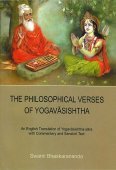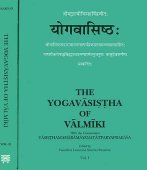Mira, Mīra, Mirā, Mir: 16 definitions
Introduction:
Mira means something in Hinduism, Sanskrit, Marathi, Hindi, biology. If you want to know the exact meaning, history, etymology or English translation of this term then check out the descriptions on this page. Add your comment or reference to a book if you want to contribute to this summary article.
Alternative spellings of this word include Meer.
In Hinduism
Ayurveda (science of life)
Nighantu (Synonyms and Characteristics of Drugs and technical terms)
Source: WorldCat: Rāj nighaṇṭuMirā (मिरा) is another name for Mūrvā, a medicinal plant identified with Marsdenia tenacissima from the Asclepiadoideae or “milkweed family” of flowering plants, according to verse 3.19-21 of the 13th-century Raj Nighantu or Rājanighaṇṭu. The third chapter (guḍūcyādi-varga) of this book contains climbers and creepers (vīrudh). Together with the names Mirā and Mūrvā, there are a total of twenty-eight Sanskrit synonyms identified for this plant.

Āyurveda (आयुर्वेद, ayurveda) is a branch of Indian science dealing with medicine, herbalism, taxology, anatomy, surgery, alchemy and related topics. Traditional practice of Āyurveda in ancient India dates back to at least the first millenium BC. Literature is commonly written in Sanskrit using various poetic metres.
Kavya (poetry)
Source: OpenEdition books: Vividhatīrthakalpaḥ (Kāvya)Mīra (मीर) in Prakrit refers to an “emir”, and represents one of the Arabic-Persian words mentioned in the Vividhatīrthakalpa by Jinaprabhasūri (13th century A.D.): an ancient text devoted to various Jaina holy places (tīrthas).

Kavya (काव्य, kavya) refers to Sanskrit poetry, a popular ancient Indian tradition of literature. There have been many Sanskrit poets over the ages, hailing from ancient India and beyond. This topic includes mahakavya, or ‘epic poetry’ and natya, or ‘dramatic poetry’.
Biology (plants and animals)
Source: Google Books: CRC World Dictionary (Regional names)1) Mir in Kenya is the name of a plant defined with Amaranthus angustifolius in various botanical sources. This page contains potential references in Ayurveda, modern medicine, and other folk traditions or local practices It has the synonym Galliaria graecizans (L.) Nieuwl. (among others).
2) Mir is also identified with Amaranthus dubius It has the synonym Amaranthus tristis Willd. (etc.).
Example references for further research on medicinal uses or toxicity (see latin names for full list):
· Pl. Hort. Erlang. (1814)
· Historia Amaranthorum (1790)
· Flora Pyrenaea (1897)
· Proceedings of the Indian Science Congress Association (1977)
· American Midland Naturalist (1914)
· Encyclopédie Méthodique, Botanique (1783)
If you are looking for specific details regarding Mir, for example pregnancy safety, extract dosage, side effects, diet and recipes, health benefits, chemical composition, have a look at these references.

This sections includes definitions from the five kingdoms of living things: Animals, Plants, Fungi, Protists and Monera. It will include both the official binomial nomenclature (scientific names usually in Latin) as well as regional spellings and variants.
Languages of India and abroad
Marathi-English dictionary
Source: DDSA: The Molesworth Marathi and English Dictionarymīra (मीर).—m ( P) At cards. The king of a suit. 2 (Usually amīra) A king or grandee.
Source: DDSA: The Aryabhusan school dictionary, Marathi-Englishmīra (मीर).—m A king or grandee.
Marathi is an Indo-European language having over 70 million native speakers people in (predominantly) Maharashtra India. Marathi, like many other Indo-Aryan languages, evolved from early forms of Prakrit, which itself is a subset of Sanskrit, one of the most ancient languages of the world.
Sanskrit dictionary
Source: DDSA: The practical Sanskrit-English dictionaryMīra (मीर).—
1) The ocean.
2) A limit, boundary.
3) A drink, beverage.
4) A particular part of a mountain.
Derivable forms: mīraḥ (मीरः).
Source: Cologne Digital Sanskrit Dictionaries: Shabda-Sagara Sanskrit-English DictionaryMīra (मीर).—m.
(-raḥ) 1. The ocean. 2. A limit, a boundary. E. mī to scatter, rak Unadi aff., and the vowel made long.
Source: Cologne Digital Sanskrit Dictionaries: Benfey Sanskrit-English DictionaryMīra (मीर).— (vb. mih), m. The ocean.
Source: Cologne Digital Sanskrit Dictionaries: Monier-Williams Sanskrit-English Dictionary1) Mirā (मिरा):—f. a limit, boundary, [cf. Lexicographers, esp. such as amarasiṃha, halāyudha, hemacandra, etc.] (cf. mīra).
2) Mīra (मीर):—m. the sea, ocean, [Uṇādi-sūtra ii, 25 [Scholiast or Commentator]] ([cf. Lexicographers, esp. such as amarasiṃha, halāyudha, hemacandra, etc.] also ‘a [particular] part of a mountain; a limit, boundary; a drink, beverage’).
Source: Cologne Digital Sanskrit Dictionaries: Yates Sanskrit-English DictionaryMīra (मीर):—(raḥ) 1. m. The ocean.
Source: DDSA: Paia-sadda-mahannavo; a comprehensive Prakrit Hindi dictionary (S)Mirā (मिरा) in the Sanskrit language is related to the Prakrit word: Merā.
[Sanskrit to German]
Sanskrit, also spelled संस्कृतम् (saṃskṛtam), is an ancient language of India commonly seen as the grandmother of the Indo-European language family (even English!). Closely allied with Prakrit and Pali, Sanskrit is more exhaustive in both grammar and terms and has the most extensive collection of literature in the world, greatly surpassing its sister-languages Greek and Latin.
Hindi dictionary
Source: DDSA: A practical Hindi-English dictionaryMīra (मीर) [Also spelled meer]:—(nm) an allomorph of [amīra]—a nobleman; chieftain; leader; winner in a competition; —[majalisa] chairman/president of an assembly/meeting; —[muhallā] leader of a locality or ward.
...
Kannada-English dictionary
Source: Alar: Kannada-English corpusMīr (ಮೀರ್):—[noun] the chief of a regiment or army.
Kannada is a Dravidian language (as opposed to the Indo-European language family) mainly spoken in the southwestern region of India.
Nepali dictionary
Source: unoes: Nepali-English DictionaryMīra (मीर):—n. leader; chief; head;
Nepali is the primary language of the Nepalese people counting almost 20 million native speakers. The country of Nepal is situated in the Himalaya mountain range to the north of India.
See also (Relevant definitions)
Starts with (+25): Mirabonda, Mirabondi Miraci, Mirabu, Miraci, Miracipuda, Miradha, Miradi, Miraghata, Miragi, Miragitana, Miragivara Yenem, Miragonda, Mirahu, Mirai-maha, Miraj, Miraja, Mirajai, Miraji, Miraka, Miraka Dhanagara.
Query error!
Full-text (+139): Mirakhana, Miram, Mira-munsi, Mira-umarau, Mirsadak, Mir-munsi, Mir-umarau, Mirsadaka, Mirah, Madvat, Mayivasu, Manmaya, Miras, Atmasad, Matkrita, Madrik, Mattas, Madrish, Saracura-mira, Mirasa.
Relevant text
Search found 50 books and stories containing Mira, Mīra, Mirā, Mir, Mīr; (plurals include: Miras, Mīras, Mirās, Mirs, Mīrs). You can also click to the full overview containing English textual excerpts. Below are direct links for the most relevant articles:
Lord Jhulelal: An Analytical Study (by Thakkar Harish Gopalji)
Part 7 - Specific Reference of History of Sind < [Chapter 2 - Literature Review]
Part 17 - Religious and Social pattern < [Chapter 2 - Literature Review]
World Journal of Pharmaceutical Research
Eval of miR-21 in invasive ductal carcinoma vs. clinicopathology. < [2015: Volume 4, July issue 7]
miR-146b overexpression as a biomarker for thyroid cancer. < [2016: Volume 5, August issue 8]
Role of junk dna in oncogenetics < [2022: Volume 11, July issue 9]
Notices of Sanskrit Manuscripts (by Rajendralala Mitra)
The Malaysian Journal of Medical Sciences
Expression of Circulating MicroRNA-141 in Epithelial Ovarian Cancer < [v.27(6): 1–189 2020 Dec]
MiR-3099 is upregulated in differentiating 46c ES cells during neural induction. < [v.21(Spec Issue): 1–58 2014 Dec]
Advancing Glioma Therapy: MicroRNAs from Umbilical Cord Stem Cell EVs < [v.26(4): 1–133 2019 Jul]
A song of Mira < [October – December, 1988]
A Song of Mira < [Jul-Aug-Sept 1940]
The Chess Players < [September 1945]
Nilamata Purana (by Dr. Ved Kumari)
Related products

